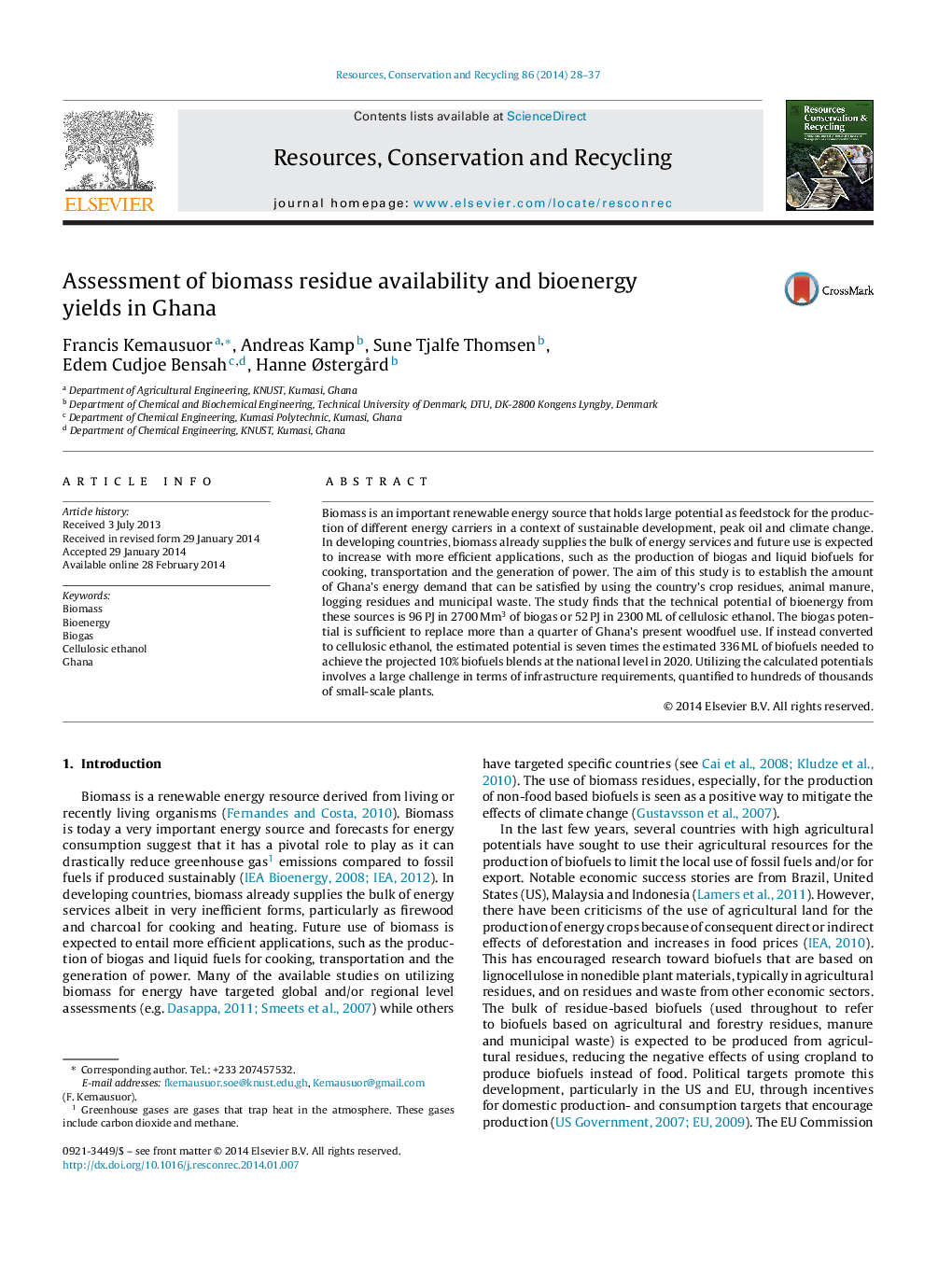| Article ID | Journal | Published Year | Pages | File Type |
|---|---|---|---|---|
| 1062938 | Resources, Conservation and Recycling | 2014 | 10 Pages |
•We establish amount of Ghana's energy demand that can be satisfied by biomass.•The biogas potential is sufficient to replace more than a quarter of woodfuel use.•Ethanol potential is seven times the biofuels needed in 2020 to achieve 10% blends.•There is currently better capacity for the production of biogas.•More research needed to enable the production of cellulosic ethanol.
Biomass is an important renewable energy source that holds large potential as feedstock for the production of different energy carriers in a context of sustainable development, peak oil and climate change. In developing countries, biomass already supplies the bulk of energy services and future use is expected to increase with more efficient applications, such as the production of biogas and liquid biofuels for cooking, transportation and the generation of power. The aim of this study is to establish the amount of Ghana's energy demand that can be satisfied by using the country's crop residues, animal manure, logging residues and municipal waste. The study finds that the technical potential of bioenergy from these sources is 96 PJ in 2700 Mm3 of biogas or 52 PJ in 2300 ML of cellulosic ethanol. The biogas potential is sufficient to replace more than a quarter of Ghana's present woodfuel use. If instead converted to cellulosic ethanol, the estimated potential is seven times the estimated 336 ML of biofuels needed to achieve the projected 10% biofuels blends at the national level in 2020. Utilizing the calculated potentials involves a large challenge in terms of infrastructure requirements, quantified to hundreds of thousands of small-scale plants.
